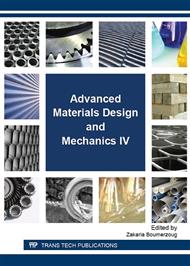p.127
p.132
p.137
p.142
p.148
p.155
p.161
p.165
p.170
Influence of Autogenous Shrinkage and early Anti-Cracking Behavior of USHC with Pretreatment RHA
Abstract:
The effect of calcinations time on carbon content and grinding time on fineness of rice husk ash (RHA) has studied. The influence of workability, compressive strength, autogenous shrinkage and early anti-cracking behavior of pretreatment RHA with calcined 30min-grinded 30min-pre-wet as admixture to UHSC has researched, the result shows that, when the content of cement replaced by RHA is 10%, the workability and compressive strength change little, while the autogenous shrinkage of UHSC reduce by 28.3%, and early anti-cracking grade increase from III to IV.
Info:
Periodical:
Pages:
155-160
Citation:
Online since:
November 2016
Authors:
Price:
Сopyright:
© 2017 Trans Tech Publications Ltd. All Rights Reserved
Share:
Citation:


